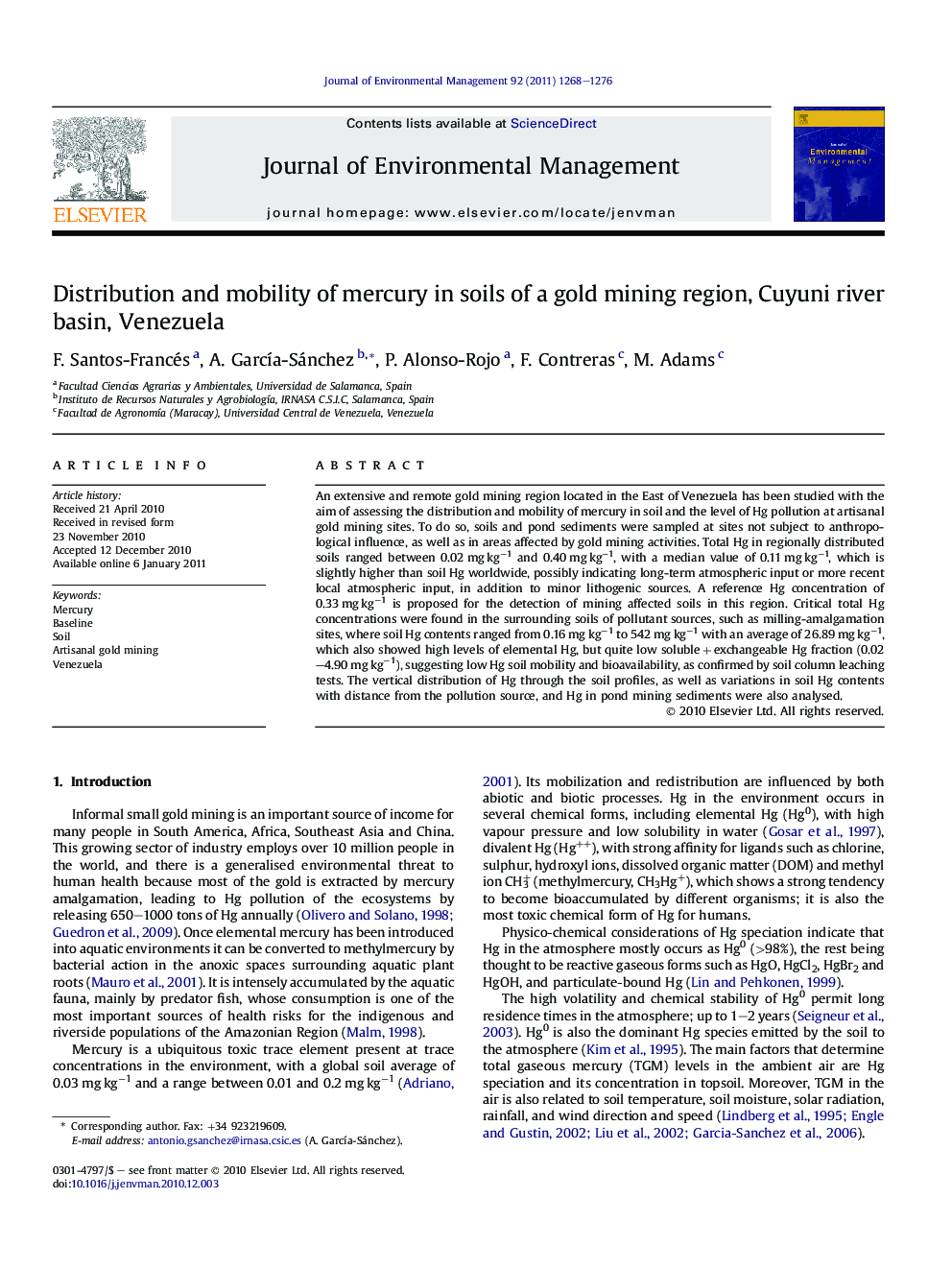| Article ID | Journal | Published Year | Pages | File Type |
|---|---|---|---|---|
| 10505595 | Journal of Environmental Management | 2011 | 9 Pages |
Abstract
An extensive and remote gold mining region located in the East of Venezuela has been studied with the aim of assessing the distribution and mobility of mercury in soil and the level of Hg pollution at artisanal gold mining sites. To do so, soils and pond sediments were sampled at sites not subject to anthropological influence, as well as in areas affected by gold mining activities. Total Hg in regionally distributed soils ranged between 0.02 mg kgâ1 and 0.40 mg kgâ1, with a median value of 0.11 mg kgâ1, which is slightly higher than soil Hg worldwide, possibly indicating long-term atmospheric input or more recent local atmospheric input, in addition to minor lithogenic sources. A reference Hg concentration of 0.33 mg kgâ1 is proposed for the detection of mining affected soils in this region. Critical total Hg concentrations were found in the surrounding soils of pollutant sources, such as milling-amalgamation sites, where soil Hg contents ranged from 0.16 mg kgâ1 to 542 mg kgâ1 with an average of 26.89 mg kgâ1, which also showed high levels of elemental Hg, but quite low soluble + exchangeable Hg fraction (0.02-4.90 mg kgâ1), suggesting low Hg soil mobility and bioavailability, as confirmed by soil column leaching tests. The vertical distribution of Hg through the soil profiles, as well as variations in soil Hg contents with distance from the pollution source, and Hg in pond mining sediments were also analysed.
Related Topics
Physical Sciences and Engineering
Energy
Renewable Energy, Sustainability and the Environment
Authors
F. Santos-Francés, A. GarcÃa-Sánchez, P. Alonso-Rojo, F. Contreras, M. Adams,
